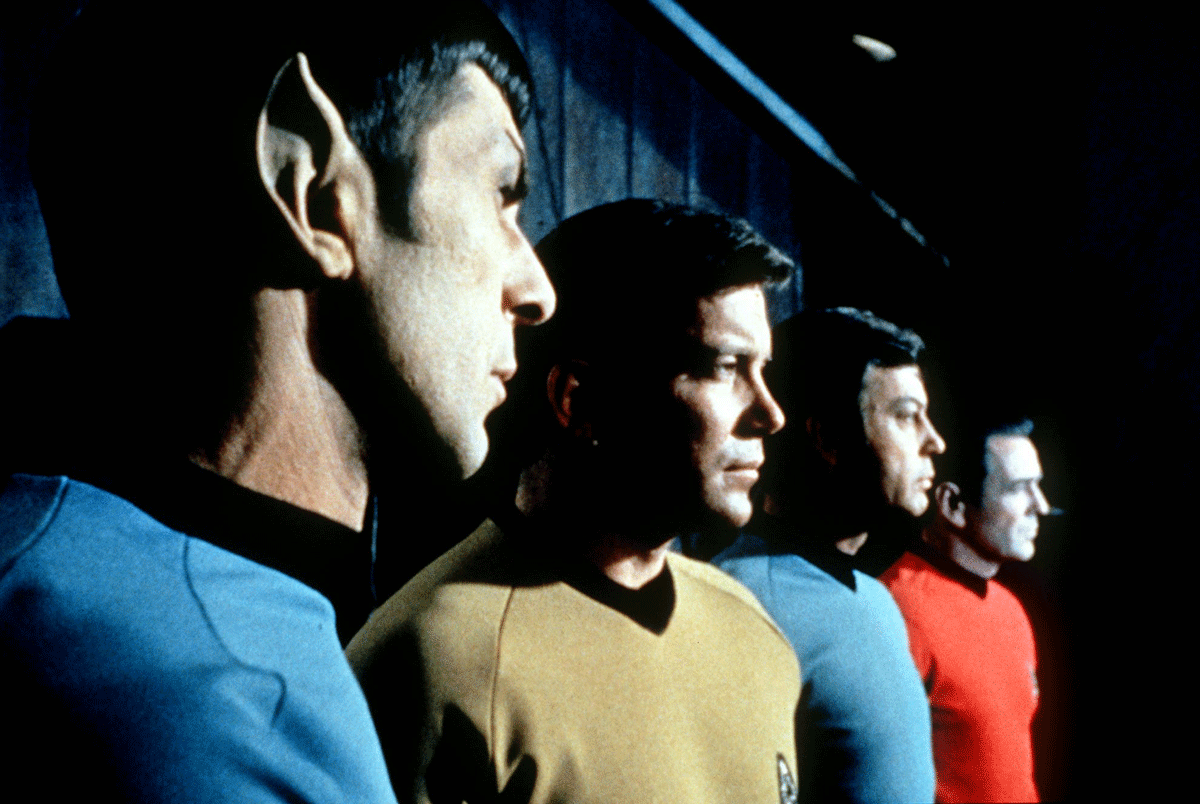WASHINGTON — Sept. 8 is a special day as the original “Star Trek” TV series turns 50 years old and NASA is set to launch an ambitious mission to an asteroid.
I clearly remember watching “Star Trek” on NBC in color and was hooked with the first episode that aired on Sept. 8, 1966, “The Man Trap.” For three seasons and a total of 80 episodes it was a wonderful hour of television. The show dealt with race, had the first ever interracial kiss on TV, considered the Cold War, had an episode on UFOs in our time (which was a big topic in 1966) and of course, space.
I have binge watched the whole “Star Trek” Original Series and quite frankly the episodes withstand the test of time. They are not dorky, clumsy or out of touch. They still resonate with me through its issues, hopes and dreams. If you like space-related sci-fi, you owe it yourself to see all 80 episodes.
“Star Trek” took place at a time when we were in a race to the moon with the USSR. The Soviets had started out fast with Yuri Gagarin and other firsts, but we caught up and passed them with the success of the Gemini program and, of course, Apollo.
You can enjoy a “Star Trek” celebration at our very own Smithsonian National Air and Space Museum by seeing the original U.S. S Enterprise (NCC-1701) on display.
Celebrate 50 years of “Star Trek” with events Sept. 8-10.
CBS will start the latest “Star Trek” TV series in January with “Star Trek: Discovery.” It will be the latest in the long line of “Star Trek” TV series: “Next Generation,” “Voyager,” “Deep Space Nine,” “Enterprise” — and, of course, movies too. All of this is fine by me and millions of fans worldwide. May “Star Trek” “live long and prosper.”
NASA intends “to boldly go where no man has gone before” at 7:05 p.m. EDT on Sept. 8 with the launch of their newest mission — OSIRIS-REx — a mission to obtain NASA’s first-ever sample plucked from an asteroid.
The name of the mission sounds like some kind of dinosaur and is a mouthful when it is spelled out — Origins, Spectral Interpretation, Resource Identification, Security-Regolith Explorer (OSIRIS-REx). But in typical NASA acronym fashion, the name tells you everything this mission is designed to accomplish:
- Origins: Return and analyze a pristine carbon rich asteroid sample
- Spectral Interpretation: Provide ground truth or direct observations for telescopic data of the entire asteroid population
- Resource Identification: Map the chemistry and mineralogy of a primitive carbon rich asteroid
- Security: Measure the effect of sunlight on the orbit of a small asteroid, known as the Yarkovsky effect — the slight push created when the asteroid absorbs sunlight and re-emits that energy as heat
- Regolith Explorer: Document the regolith (layer of loose, outer material) at the sampling site at scales down to the sub-centimeter
The mission fact sheet contains more details.
I participated telephonically in a news conference about the mission held by NASA on Aug. 17. The OSIRIS-REx team of scientists and contractors fielded questions from the press and social media. What was most interesting to me is that the asteroid Bennu was selected not only because of its orbital characteristics that make a sample return mission feasible, but also its makeup of complex carbon based material.
Bennu was studied by astronomers and found to be a most interesting asteroid that will provide much information about the formation of our solar system 4.5 billion years ago.
I asked the team, “What is the most exciting finding you expect from this mission?” The collective answer was quite revealing.
“Bennu is a new world, we know a lot as a result of the astronomy campaign but OSIRIS-REx will study and map it up close. Bennu is pristine solar system material — new material we do not have now in meteorites; and as we have found out in Apollo sample studies taking place nearly 50 years after they were obtained, new technology and methods is making new discoveries.”
The Bennu sample obtained by OSIRIS-REx will be allocated to researchers and partners. Seventy-five person of the sample will be preserved for future research using new technology and techniques to learn even more than we will in the initial studies of the sample.
OSIRIS-REx will pave the way for future asteroid exploration perhaps by other robotic spacecraft including commercial mining and manned missions using NASA’s Orion-Space Launch System.
The public is invited to watch the launch at NASA’s Goddard Spaceflight Center Visitor Center on Sept. 8 starting at 5:30 p.m. EDT.
I’ll have more on OSIRIS-REx as the mission goes on.
Follow me at Twitter @skyguyinva and my daily blog to keep up with the latest news in astronomy and space exploration. You can email me at skyguyinva@gmail.com.







